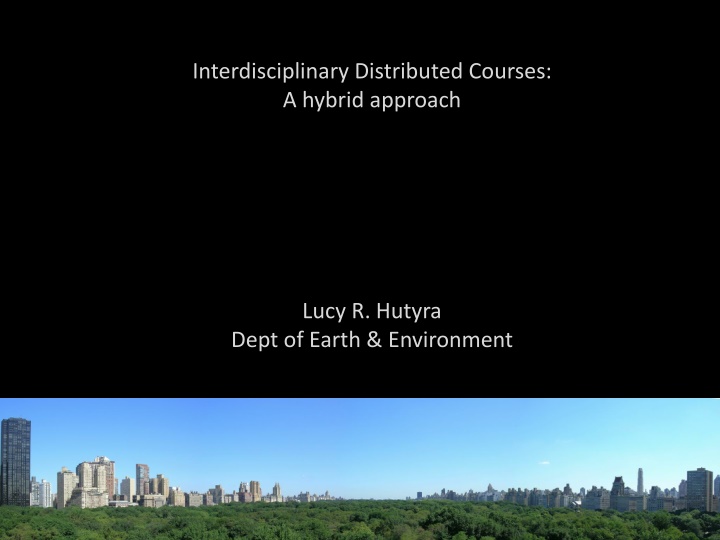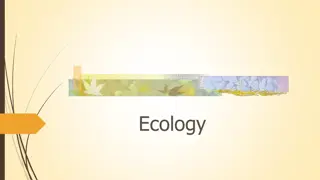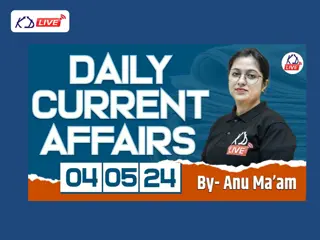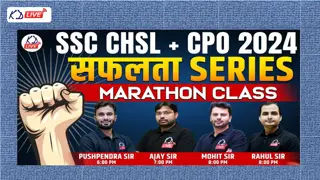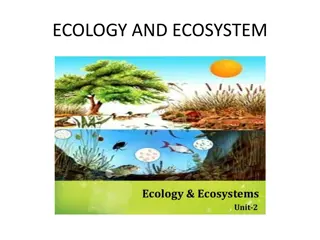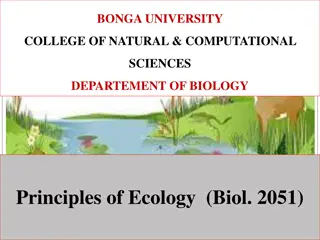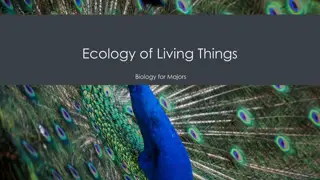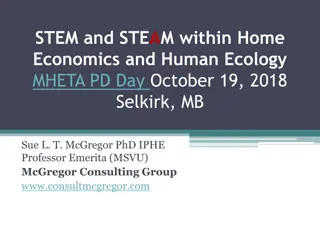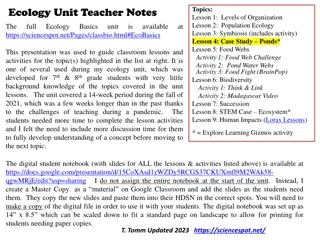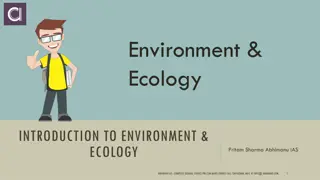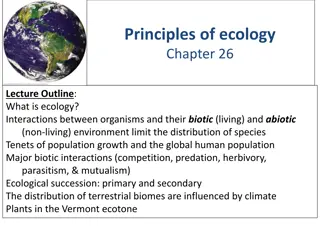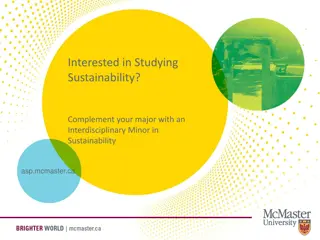Interdisciplinary Distributed Courses: A Hybrid Approach Experiment in Urban Ecology
Explore the innovative approach of interdisciplinary distributed courses through an experiment in urban ecology. This hybrid model involves parallel, distributed teaching on various disciplines to address urban ecosystem challenges. The experiment utilized a 3-hour teaching block, video guest lectures with national experts, and collaboration tools like wikis and blogs across multiple nodes. Challenges included setting up hardware and space for the classes and selecting suitable software for stable and user-friendly communication.
Download Presentation

Please find below an Image/Link to download the presentation.
The content on the website is provided AS IS for your information and personal use only. It may not be sold, licensed, or shared on other websites without obtaining consent from the author.If you encounter any issues during the download, it is possible that the publisher has removed the file from their server.
You are allowed to download the files provided on this website for personal or commercial use, subject to the condition that they are used lawfully. All files are the property of their respective owners.
The content on the website is provided AS IS for your information and personal use only. It may not be sold, licensed, or shared on other websites without obtaining consent from the author.
E N D
Presentation Transcript
Interdisciplinary Distributed Courses: A hybrid approach Lucy R. Hutyra Dept of Earth & Environment
Interdisciplinary Distributed Courses: A hybrid approach An experiment in parallel, distributed teaching on an interdisciplinary topic. Lucy R. Hutyra Dept of Earth & Environment
The Challenge Urban Ecology is the study of ecosystems that include humans living in cities and urbanizing landscapes. It aims to understand ecology of and in cities. Interdisciplinary: Different disciplines work jointly on a common problem. Across Multidisciplinary: Different disciplines work sequentially using their own tools to a common problem Includes: ecology, geography, biogeochemistry, urban planning, sociology, political science, architecture, public health, etc Disciplinary: Single disciplines work together Within
The Experiment Use a 3-hour teaching block to allow for a variety of activities in class Use video guest lectures with national experts on each topic (tackle all those different disciplines & expose the students to a range of research) Link two classes today for an hour a week (each had its own instructor). Use a wiki & blogs to facilitate collaboration across the nodes. Video guest lectures now available through an NSF research coordination network (RCN) Guest speaker Parallel, distributed class
Challenge 1 Hardware & Space Space for >20 people. Video Cameras Audio System Screen We couldn t find an existing space so we created one in a conference room. Luis Cuco Daglio (BU Media Services) configured a system. New equipment was purchased. But, it was not an official classroom Brian Anderson (CAS IT) serviced it HIMSELF. Equipment List (~$2500): LCD 60 HDTV and Mobile Cart 2 x Creative Technology HD 1080 webcams Polycom SoundStation with extra microphones Cable Accessories Cart
Challenge 2 Software Not the typical business application Not the typical social application With different guest speakers every week it had to be stable, inexpensive, widely available, very easy to use, compatible with different operating systems, simple interface with a webcam, etc
Challenge 2 Software Google Hangouts positives: free, easy to use, capacity for lots of participants Negatives: inflexible with ppt display size. Mac/PC functionality differences.
Challenge 2 Software Premium Skype: positives: low cost, easy to use, capacity for lots of participants negatives: inflexible with ppt display size. Frequent audio/video interruptions. No video capture.
Challenge 2 Software Webex: positives: low cost, easy to use, capacity for lots of participants, good screen sharing, automated camera shifting, easy to install/run, video capture negatives: stability issues during busy business hours.
Challenge 2 Software Speaker NCSU Class Slides
Summary The Good Opportunity for students to hear from many experts and learn from experiments across the country Excellent networking for the students & faculty. Low cost guest lectures.
Summary The Challenging Hardware & software issues consumed an enormous amount of time Video capture is poor Cross class interactions were not (yet) optimized Co-authored lecture summaries on the wiki were an enormous challenge for the students. The time requirements for this pilot class were significantly more than a typical class. Next scheduled to be taught in Spring 2015
Thank You!! Dean Susan Jackson, CAS Sr. Associate Dean for Undergraduate Education Luis Cuco Daglio, BU Media Services Brian Anderson, Manager Computing Services, CAS IT Stacy Gianoulis, IS&T IT Help Center Amod Lele, IS&T educational specialist Curtis Woodcock, Chair of Dept. of Earth & Environment NSF CAREER program
